ZHCSHI4D January 2018 – December 2019 TPS25221
PRODUCTION DATA.
- 1 特性
- 2 应用
- 3 说明
- 4 修订历史记录
- 5 Device Comparison Table
- 6 Pin Configuration and Functions
- 7 Specifications
- 8 Parameter Measurement Information
- 9 Detailed Description
- 10Application and Implementation
- 11Power Supply Recommendations
- 12Layout
- 13器件和文档支持
- 14机械、封装和可订购信息
封装选项
机械数据 (封装 | 引脚)
散热焊盘机械数据 (封装 | 引脚)
- DRV|6
订购信息
7.6 Typical Characteristics
See Figure 21 for reference schematic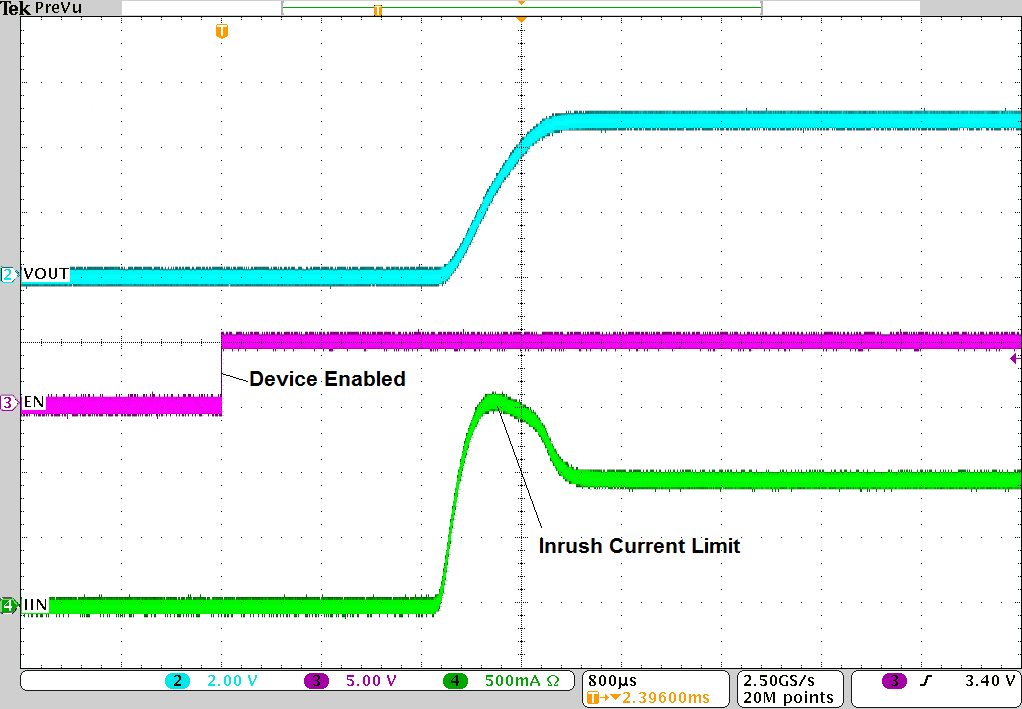
| VIN = 5 V, RILIM = 20 kΩ, ROUT = 5 Ω |
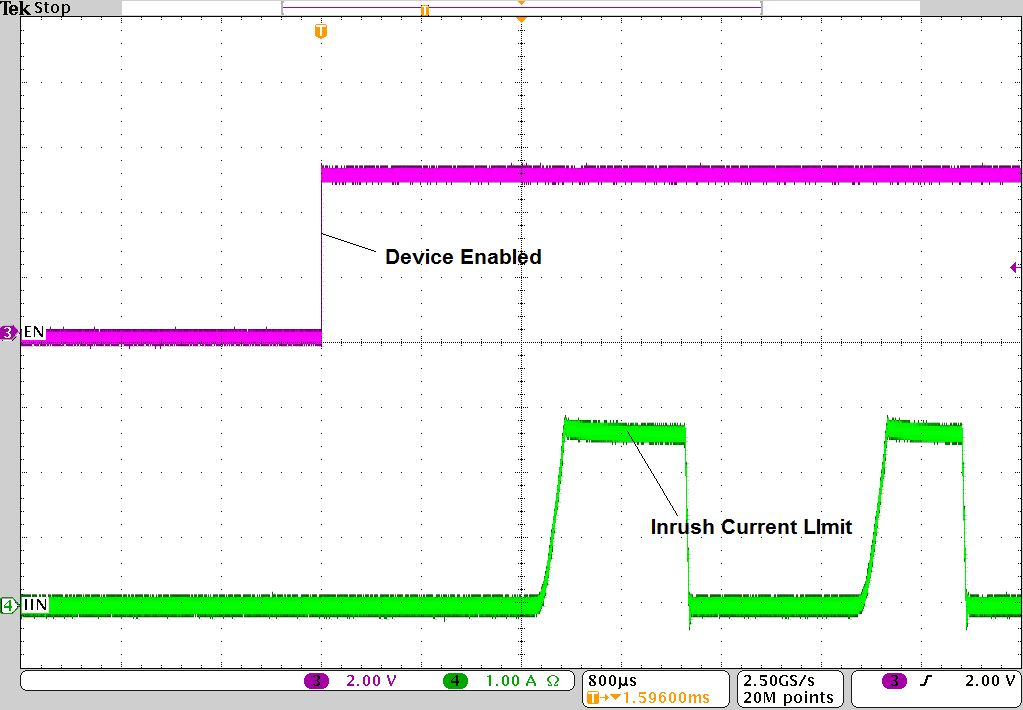
| VIN = 5 V, RILIM = 20 kΩ, ROUT = 0 Ω |
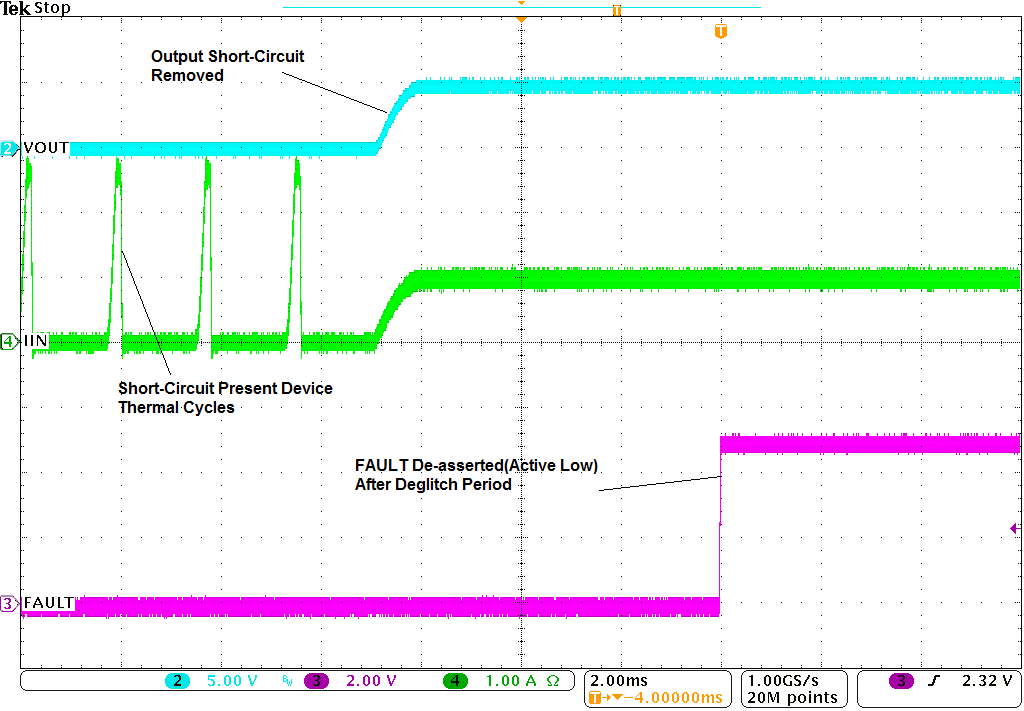
| VIN = 5 V, RILIM = 20 kΩ |
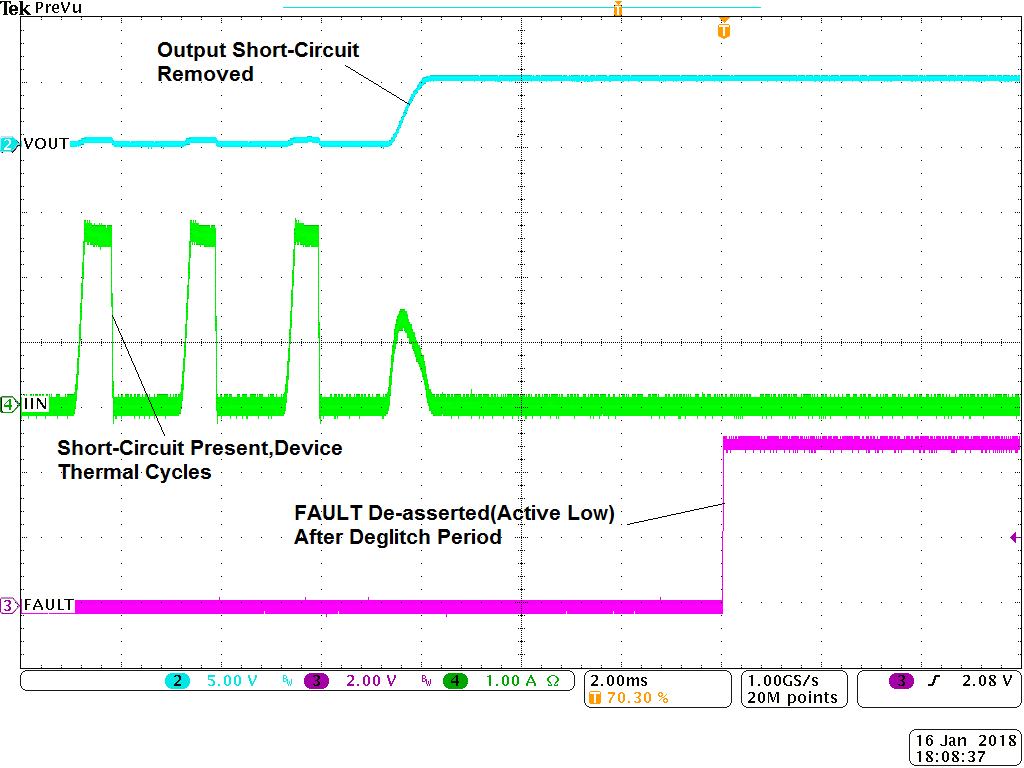
| VIN = 5 V, RILIM = 20 kΩ |
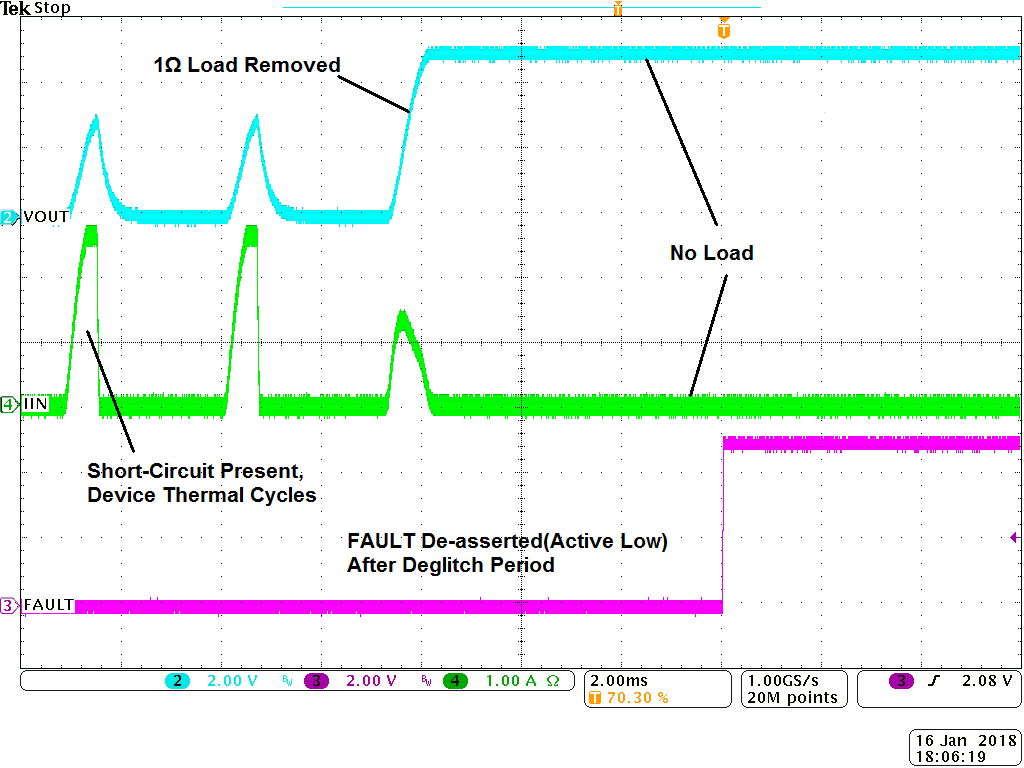
| VIN = 5 V, RILIM = 20 kΩ |
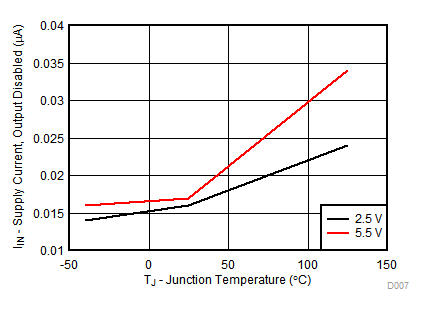
| RILIM = 20 kΩ |
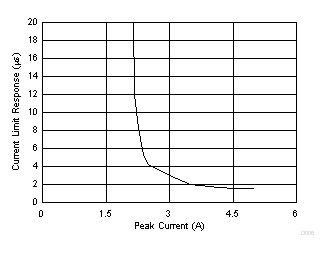
| VIN = 5 V, RILIM = 20 kΩ, TA = 25°C |
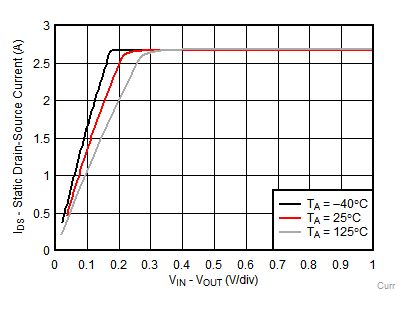
| VIN = 5.5 V, RILIM = 20 kΩ |
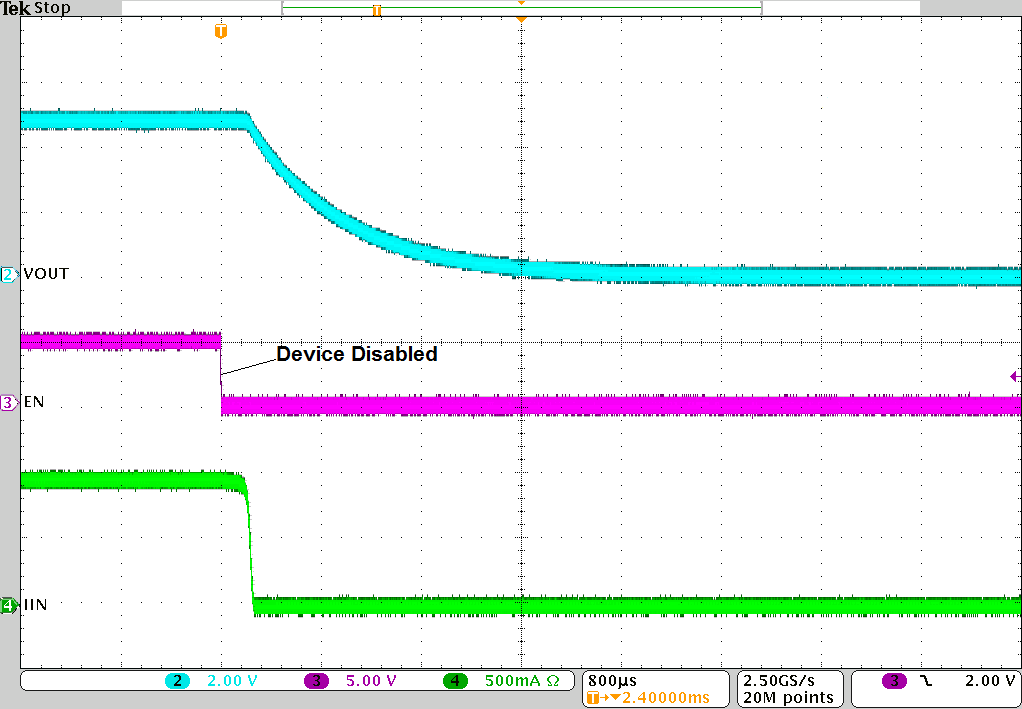
| VIN = 5 V, RILIM = 20 kΩ, ROUT = 5 Ω |
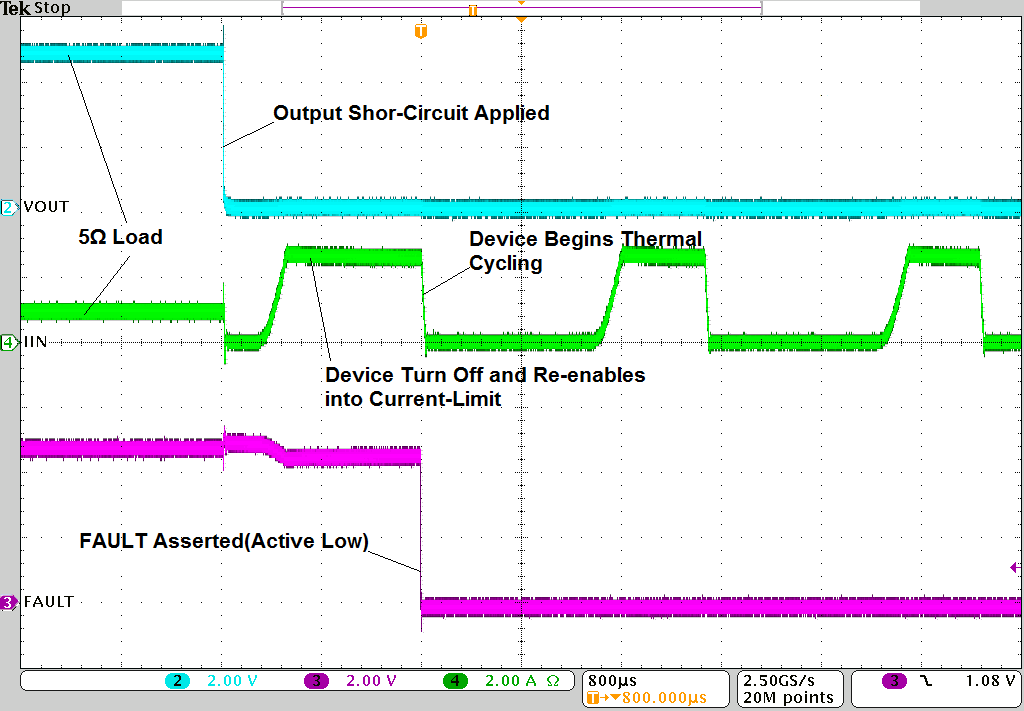
| VIN = 5 V, RILIM = 20 kΩ |
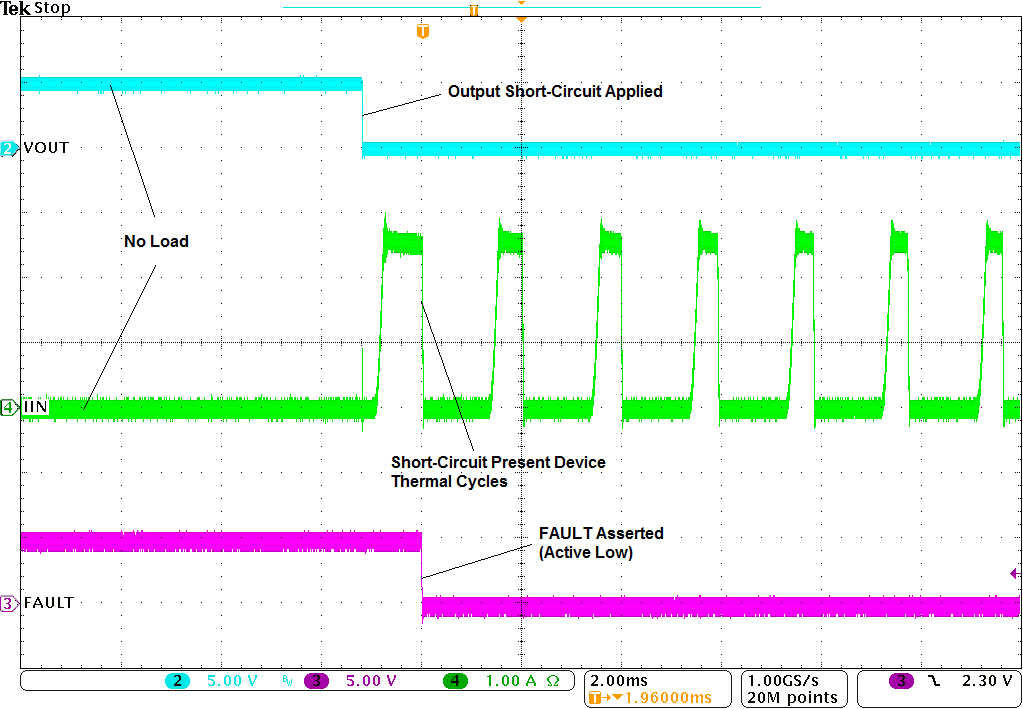
| VIN = 5 V, RILIM = 20 kΩ |
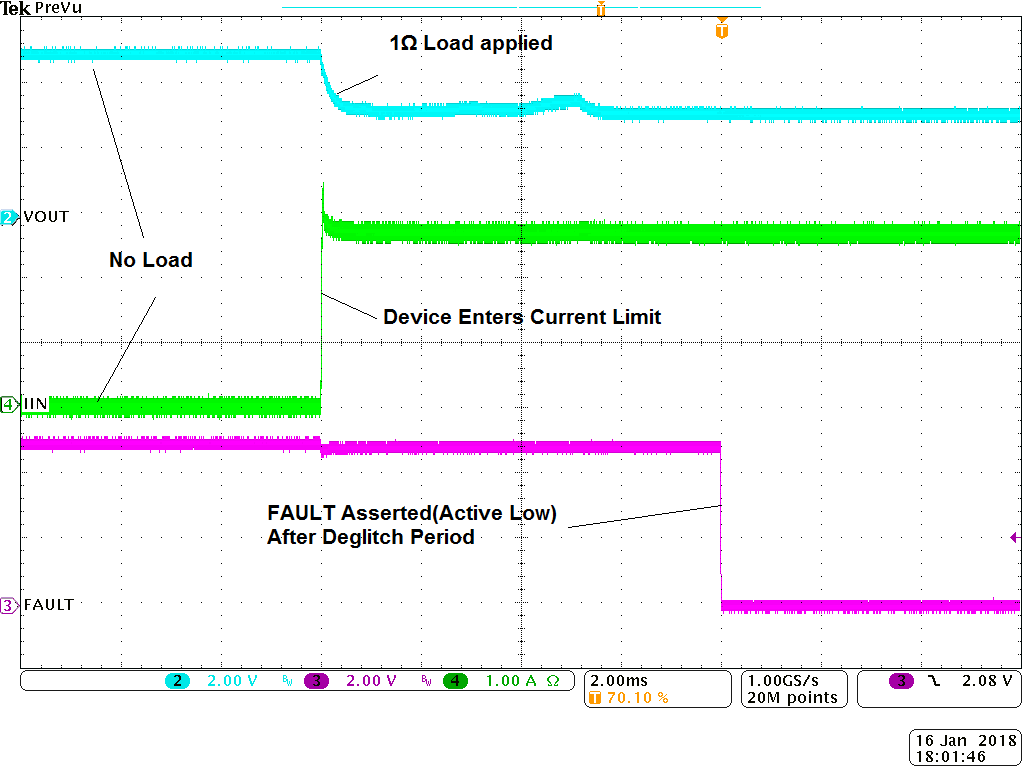
| VIN = 5 V, RILIM = 20 kΩ |
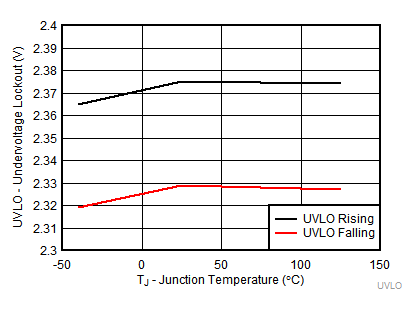
| RILIM = 20 kΩ | ||
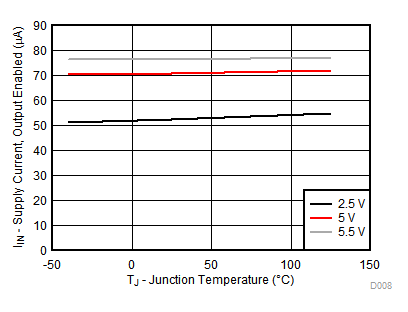
| RILIM = 20 kΩ |
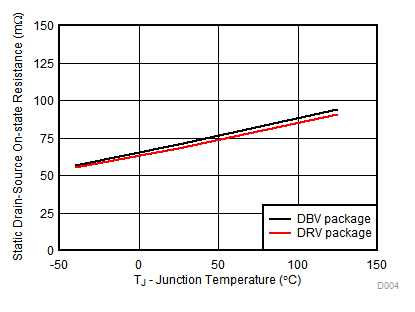
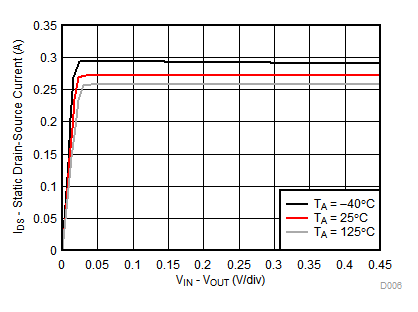
| VIN = 5.5 V, RILIM = 210 kΩ |